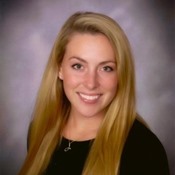Program Information
Using the ACR PET Phantom to Evaluate Interscan Noise in PET
J Carroll*, T Turkington , R Davis , Duke University Medical Center, Durham, NC
Presentations
TU-C3-GePD-IT-4 (Tuesday, August 1, 2017) 10:30 AM - 11:00 AM Room: Imaging ePoster Theater
Purpose: The inherent variability in repeated PET SUV measurements includes multiple components, one of which is image noise. We propose to use repeat measurements of a common phantom to estimate the noise, and scale these results to clinically relevant values by comparison to scans of a large whole-body phantom.
Methods: The ACR PET phantom was filled according to ACR protocol (including 2.5:1 contrast). The comparison phantom was Data Spectrum Corporation’s Extended Oval PET Phantom (36 cm x 22 cm x 40 cm), in which we inserted a total of 24 hot spheres (8-1 cm, 8-2 cm & 8-3 cm) filled with 18F at a ratio of 8:1 to background. We scanned both phantoms on a GE Discovery IQ (5 ring) and a GE Discovery 690 PET/CT system each for 30 x 2 min frames, and reconstructed the images with OSEM, using our clinical parameters. To analyze, we calculated the standard deviation (S.D), mean, and coefficient of variation (C.O.V.) for the maximum pixel value across all frames in regions of interest of the same size for all four rods of the ACR phantom. For the Extended Oval phantom, S.D., mean, and C.O.V. were calculated for the maximum pixel value in the volume of each sphere across all frames.
Results: For the ACR phantom, C.O.V. measurements yielded 5.1% and 4.9% for the DIQ and D690 systems, respectively. Similarly, the Oval phantom’s 20mm spheres yielded 4.7% and 4.7%. Lower values were measured for the 30mm spheres.
Conclusion: Even though there are important differences (size, contrast, lesion shape), the scan-to-scan variability measurements from the ACR phantom are similar to the Oval phantom for comparable size rods/spheres.
Funding Support, Disclosures, and Conflict of Interest: This work has been supported by RSNA/QIBA.
Contact Email:
